Abstract
A method for precise microscopic enumeration of acid-fast bacilli in the sputum of patients with pulmonary tuberculosis is described. The total number of acid-fast bacilli and the number of culturable cell units of tubercle bacilli per milliliter of sputum were determined in 269 specimens from 28 patients collected prior to and/or during chemotherapy, to establish the usefulness of the procedure for evaluation of the effects of chemotherapy. Prior to or very early in the course of therapy, there was good agreement between microscopically and culturally measurable bacilli in 27 of 28 patients. Thereafter, there were systematic divergences in five patients and occasional divergences in most others. Yet, in general, in 20 of the 28 patients, the microscopically determined population provided a useful measure of the number of culturable tubercle bacilli present. Although the microscopic procedure does not allow species identification of mycobacteria or differentiation between viable and nonviable cells, it often provided, within hours rather than days or weeks, useful information on the residual burden of acid-fast bacilli in sputum during chemotherapy. The nature of the disease in those patients in whom microscopy failed to provide useful information is discussed.
Full text
PDF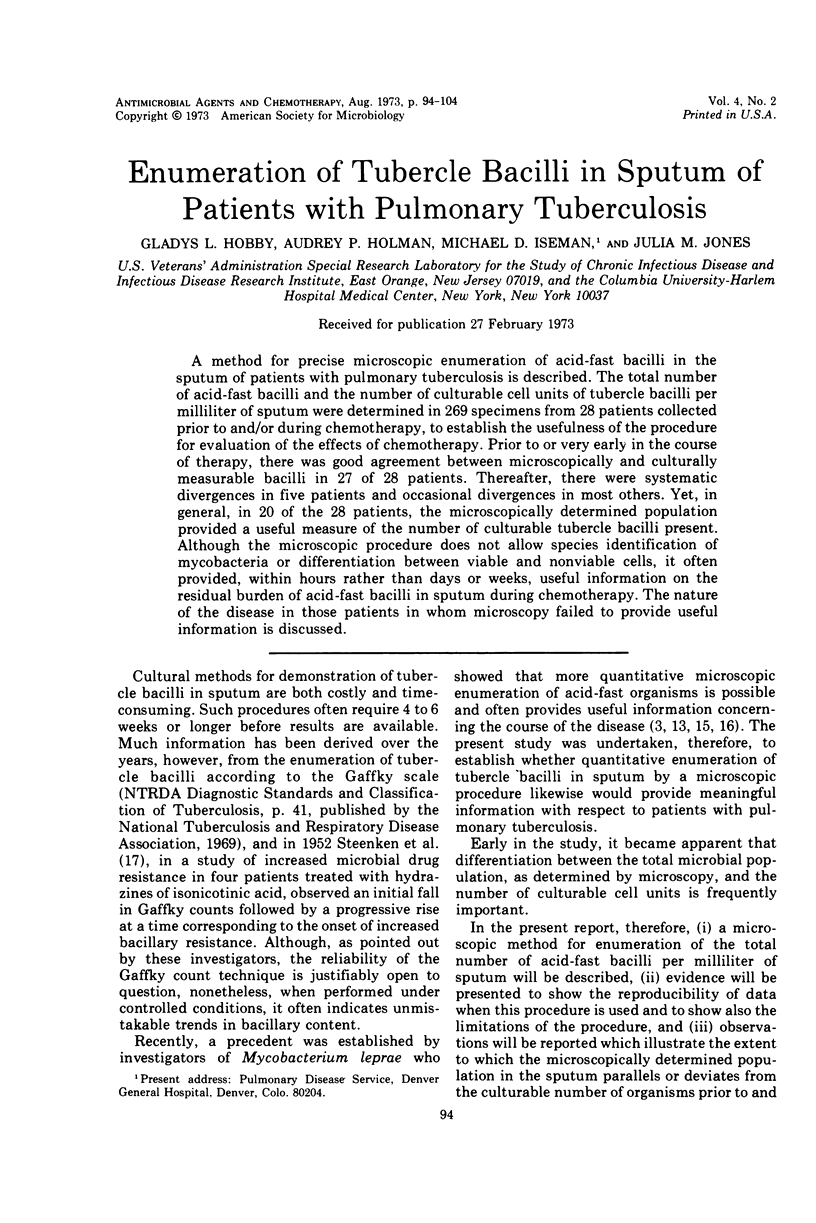
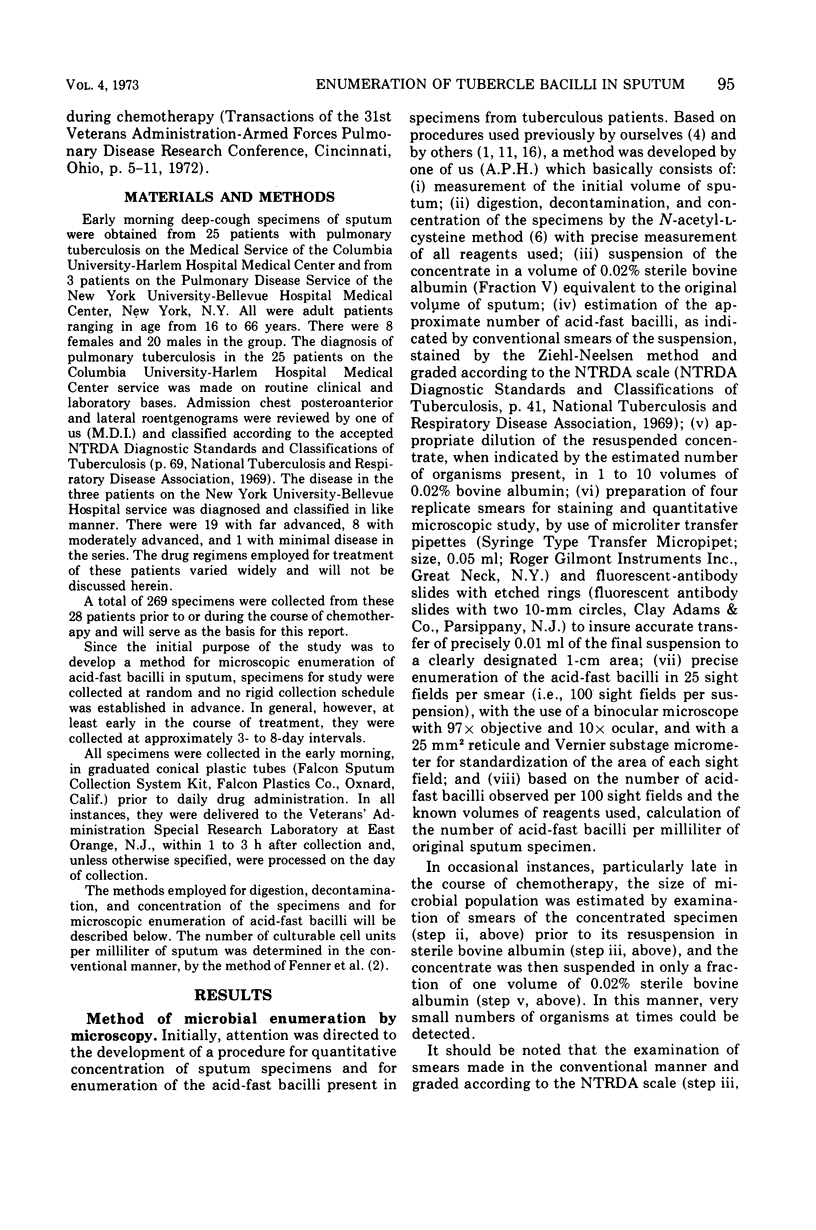
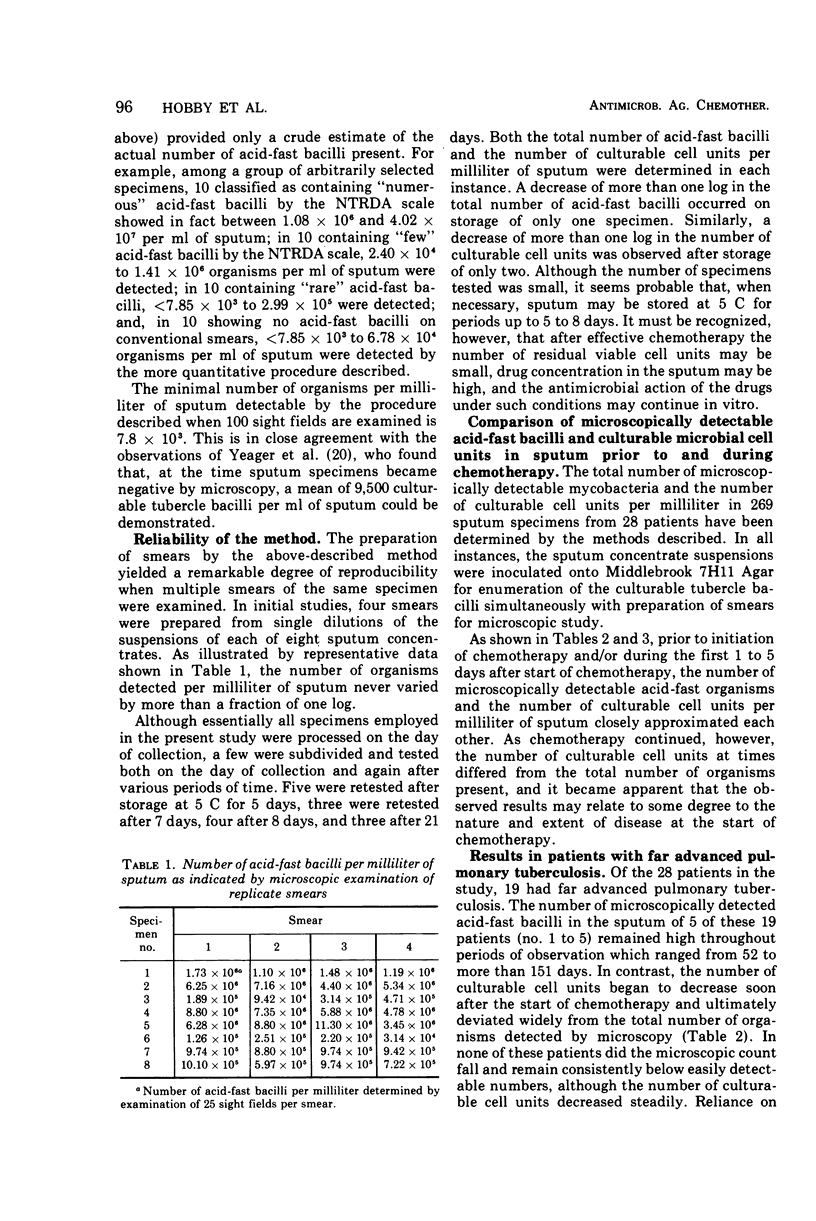
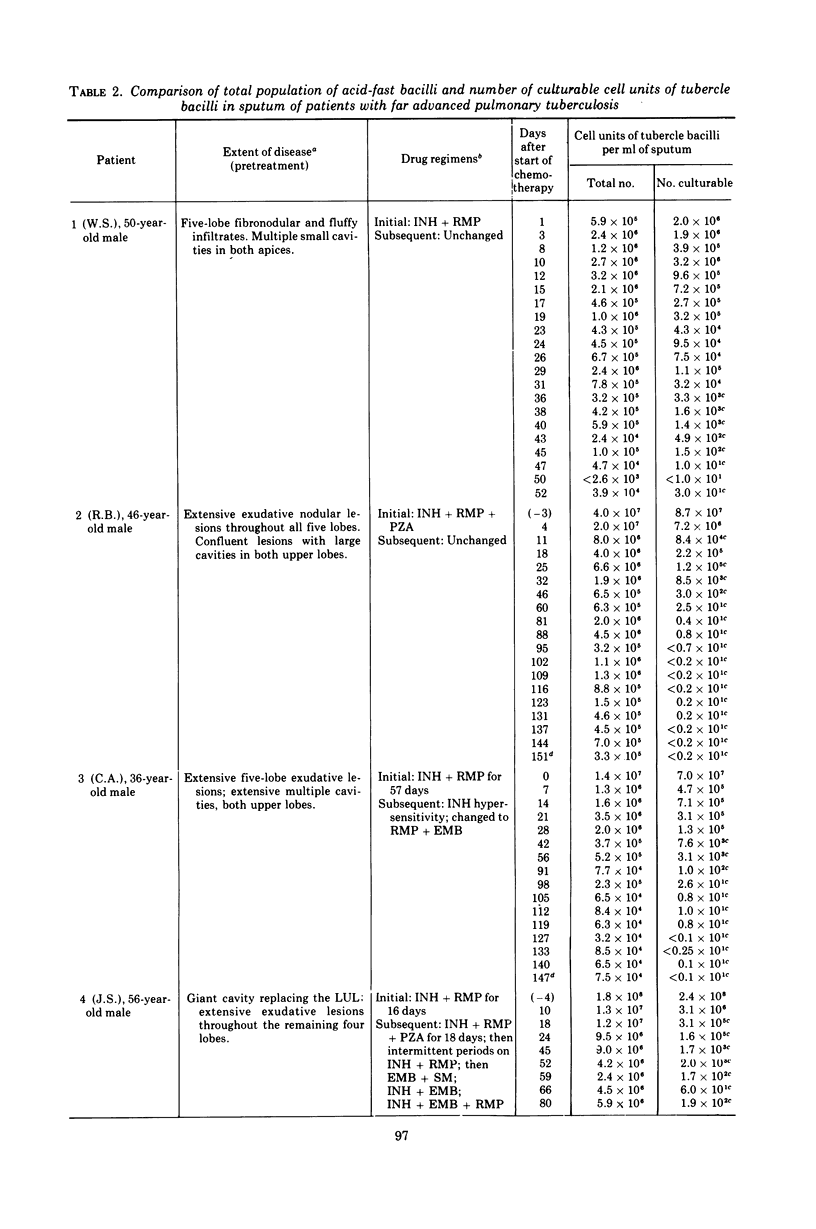
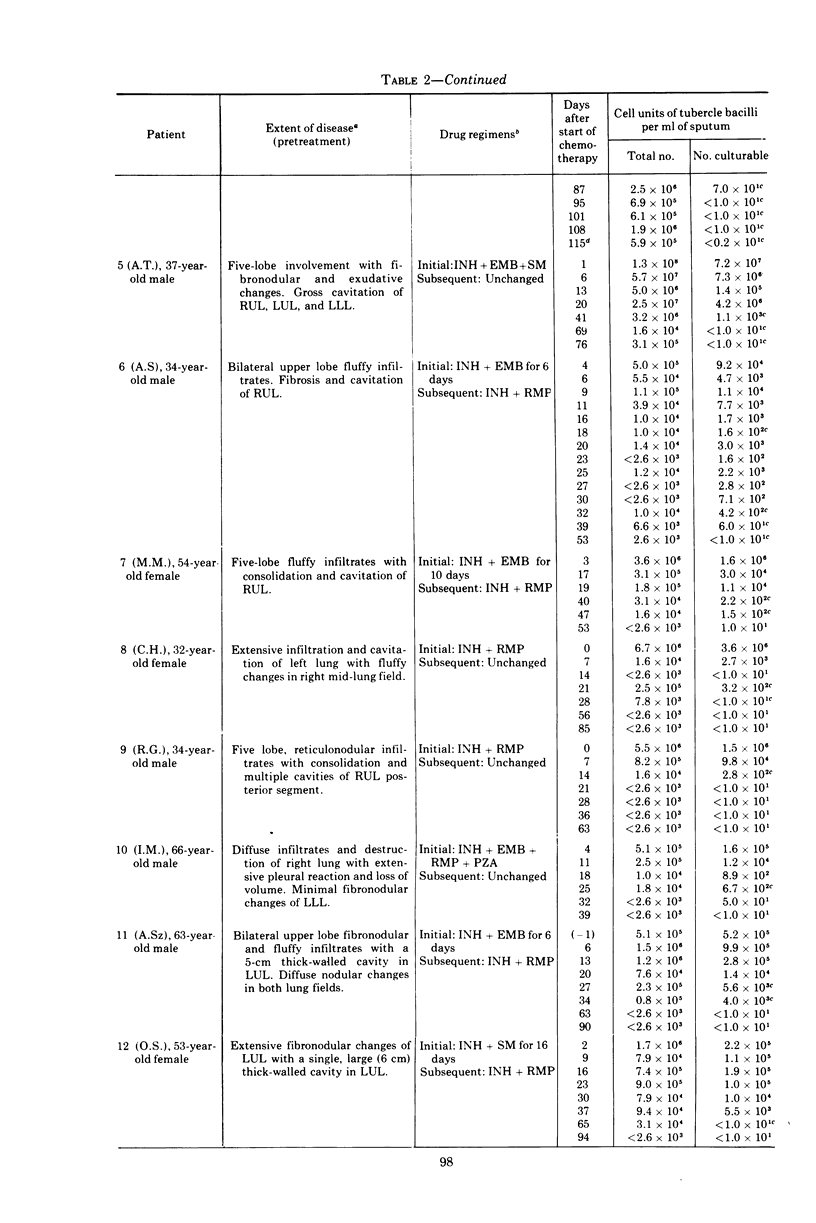
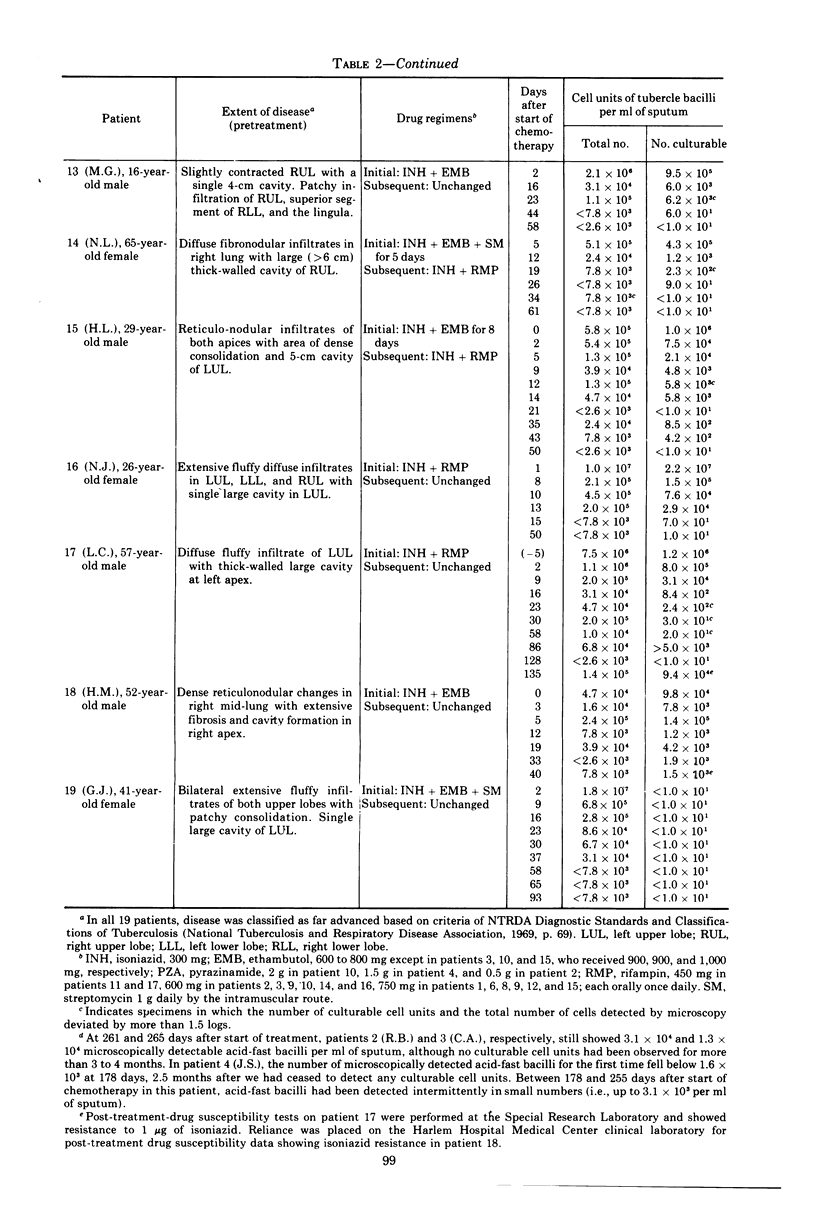
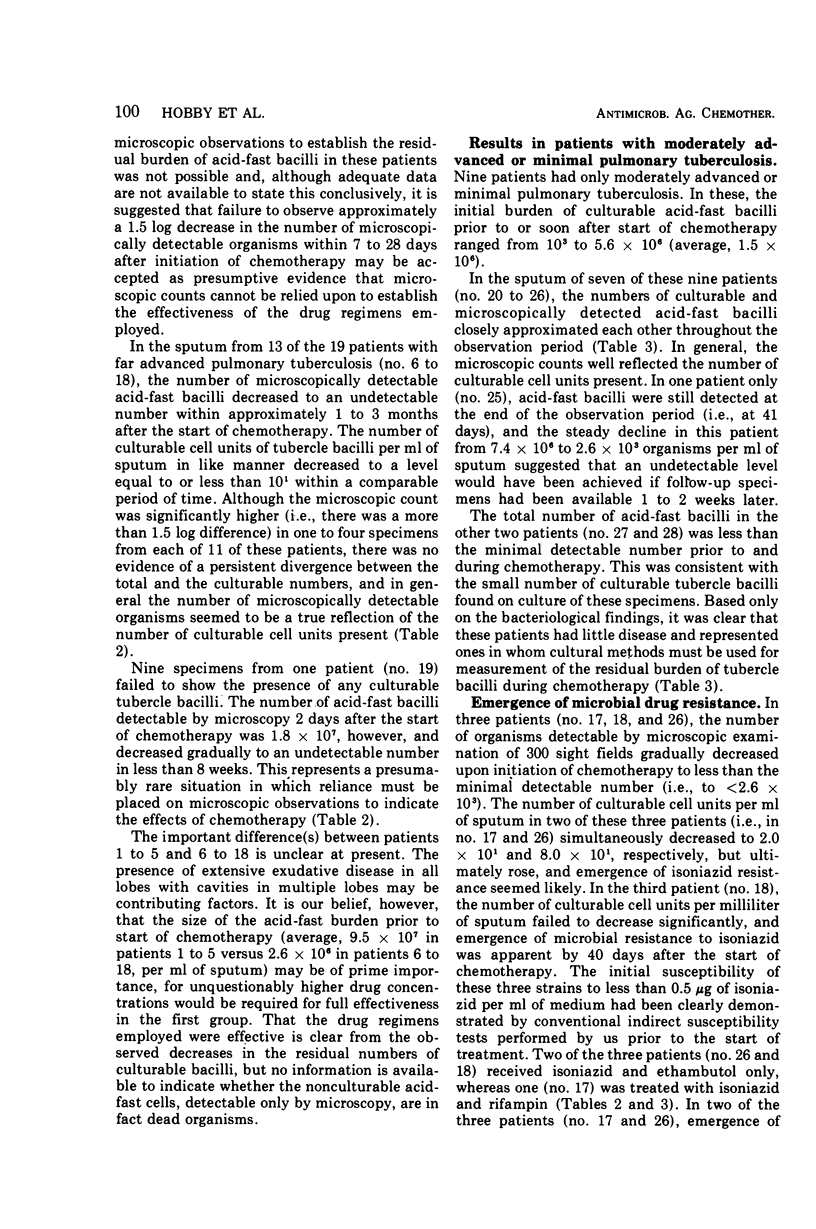
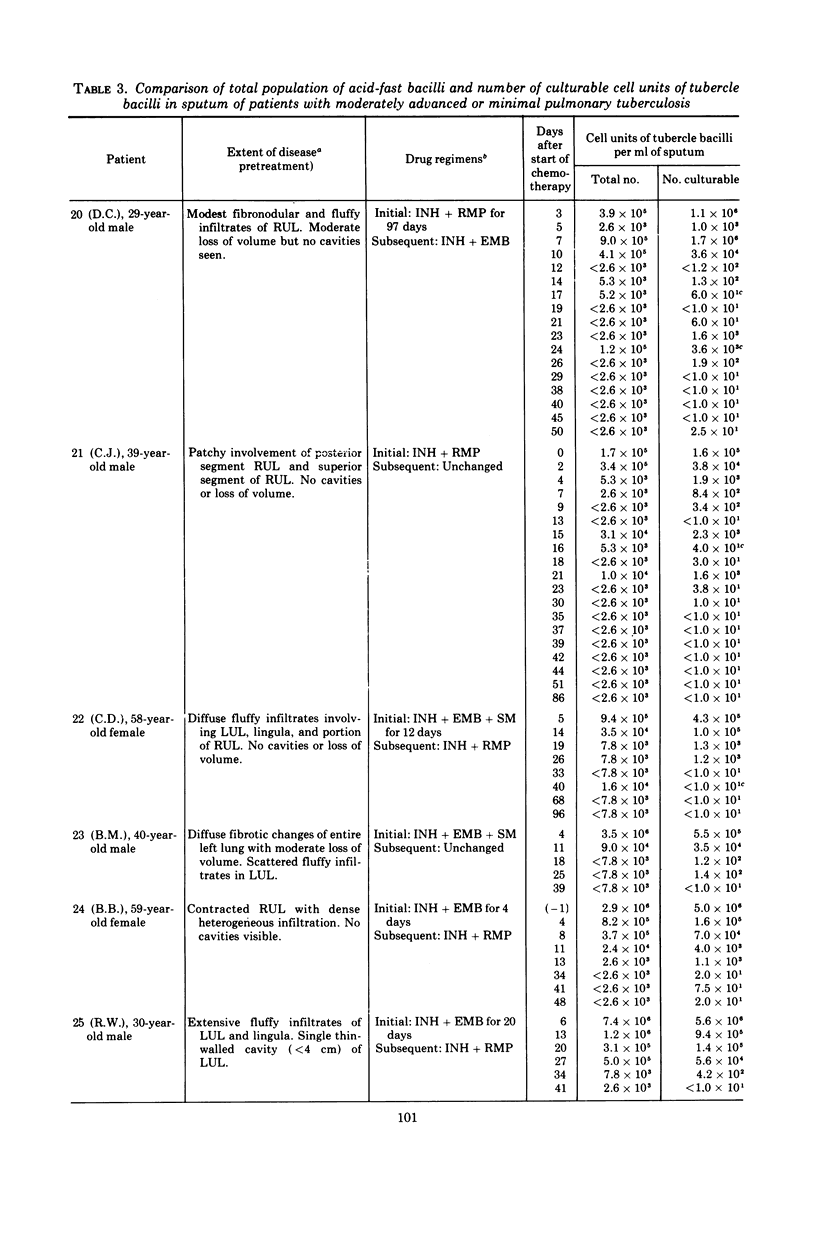
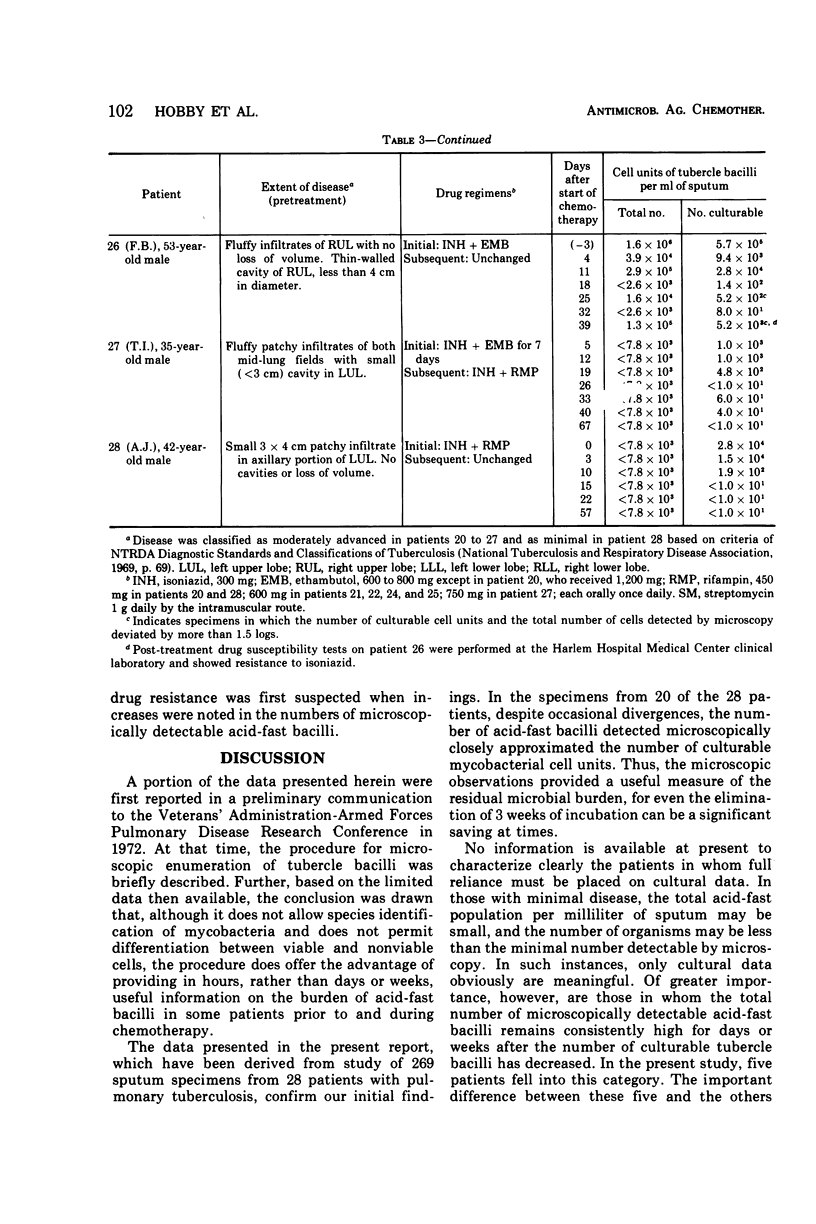

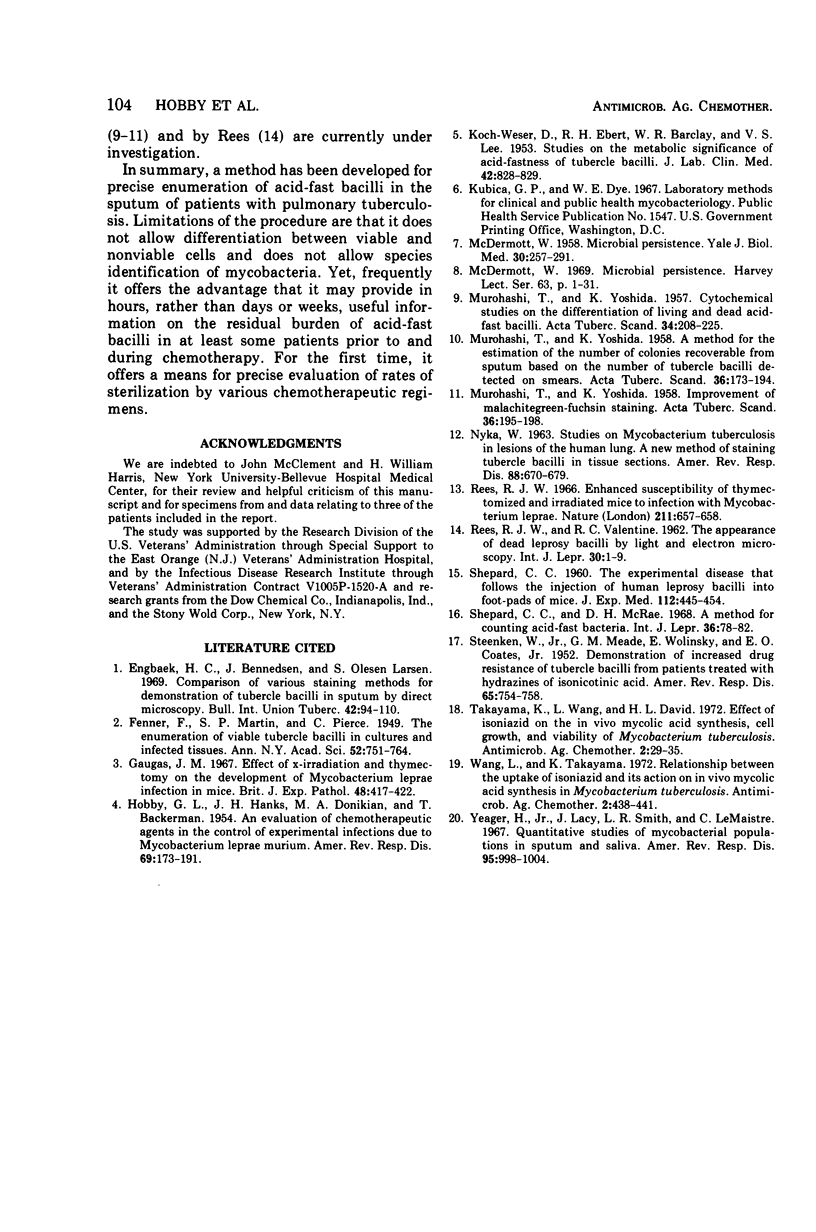
Selected References
These references are in PubMed. This may not be the complete list of references from this article.
- Engbaek H. C., Bennedsen J., Olesen Larsen S. Comparison of various staining methods for demonstration of tubercle bacilli in suputum by direct microscopy. Bull Int Union Tuberc. 1969 Aug;42:94–110. [PubMed] [Google Scholar]
- FENNER F., MARTIN S. P., PIERCE C. H. The enumeration of viable tubercle bacilli in cultures and infected tissues. Ann N Y Acad Sci. 1949 Dec 14;52(5):751-64, illust. doi: 10.1111/j.1749-6632.1949.tb53966.x. [DOI] [PubMed] [Google Scholar]
- Gaugas J. M. Effect of x-irradiation and thymectomy on the development of Mycobacterium leprae infection in mice. Br J Exp Pathol. 1967 Aug;48(4):417–422. [PMC free article] [PubMed] [Google Scholar]
- HOBBY G. L., HANKS J. H., DONIKIAN M. A., BACKERMAN T. An evaluation of chemotherapeutic agents in the control of experimental infections due to Mycobacterium leprae murium. Am Rev Tuberc. 1954 Feb;69(2):173–191. doi: 10.1164/art.1954.69.2.173. [DOI] [PubMed] [Google Scholar]
- MUROHASHI T., YOSHIDA K. Cytochemical studies on the differentiation of living and dead acid-fast bacilli. Acta Tuberc Scand. 1957;34(3-4):208–225. [PubMed] [Google Scholar]
- McDERMOTT W. Microbial persistence. Yale J Biol Med. 1958 Feb;30(4):257–291. [PMC free article] [PubMed] [Google Scholar]
- McDermott W. Microbial persistence. Harvey Lect. 1969;63:1–31. [PubMed] [Google Scholar]
- NYKA W. STUDIES ON MYCOBACTERIUM TUBERCULOSIS IN LESIONS OF THE HUMAN LUNG. A NEW METHOD OF STAINING TUBERCLE BACILLI IN TISSUE SECTIONS. Am Rev Respir Dis. 1963 Nov;88:670–679. doi: 10.1164/arrd.1963.88.5.670. [DOI] [PubMed] [Google Scholar]
- REES R. J., VALENTINE R. C. The appearance of dead leprosy bacilli by light and electron microscopy. Int J Lepr. 1962 Jan-Mar;30:1–9. [PubMed] [Google Scholar]
- Rees R. J. Enhanced susceptibility of thymectomized and irradiated mice to infection with Mycobacterium leprae. Nature. 1966 Aug 6;211(5049):657–658. doi: 10.1038/211657a0. [DOI] [PubMed] [Google Scholar]
- STEENKEN W., Jr, MEADE G. M., WOLINSKY E., COATES E. O., Jr Demonstration of increased drug resistance of tubercle bacilli from patients treated with hydrazines of isonicotinic acid. Am Rev Tuberc. 1952 Jun;65(6):754–758. doi: 10.1164/art.1952.65.6.754. [DOI] [PubMed] [Google Scholar]
- Shepard C. C., McRae D. H. A method for counting acid-fast bacteria. Int J Lepr Other Mycobact Dis. 1968 Jan-Mar;36(1):78–82. [PubMed] [Google Scholar]
- Takayama K., Wang L., David H. L. Effect of isoniazid on the in vivo mycolic acid synthesis, cell growth, and viability of Mycobacterium tuberculosis. Antimicrob Agents Chemother. 1972 Jul;2(1):29–35. doi: 10.1128/aac.2.1.29. [DOI] [PMC free article] [PubMed] [Google Scholar]
- Wang L., Takayama K. Relationship between the uptake of isoniazid and its action on in vivo mycolic acid synthesis in Mycobacterium tuberculosis. Antimicrob Agents Chemother. 1972 Dec;2(6):438–441. doi: 10.1128/aac.2.6.438. [DOI] [PMC free article] [PubMed] [Google Scholar]
- Yeager H., Jr, Lacy J., Smith L. R., LeMaistre C. A. Quantitative studies of mycobacterial populations in sputum and saliva. Am Rev Respir Dis. 1967 Jun;95(6):998–1004. doi: 10.1164/arrd.1967.95.6.998. [DOI] [PubMed] [Google Scholar]


